“As Sayuri was standing beneath the Cherry tree, speaking to the one man she loved but could not have, a sprinkle of delicate pale pink petals fell upon them like snow…” At this point, Sebastien GRABBED the remote control, interrupting the most beautiful moment of Memoirs of a Geisha and in his French accent declared to Stefan: “One day, we too, will become a male geisha!”
Table of Contents
About taikomochi – The Male Geisha Culture in Japan

The word geisha comes from two words, gei and sha which translates to art person. Historically, geisha are entertainers who perform various arts like classical music, dancing, and games. But in fact, the original geisha were men. They were male advisors and entertainers to their daimyo (feudal lords), dating back to the 1200s. They were also tea connoisseurs, artists, and gifted storytellers.
The first female geisha didn’t appear until several centuries later in 1751 but grew so quickly in popularity that they soon outnumbered the men. Today, there are 5 known male geisha in Japan: 4 in Tokyo and 1 in Kyoto. Make that 7 if you include the Nomadic Geisha.
The Studio Geisha Cafe
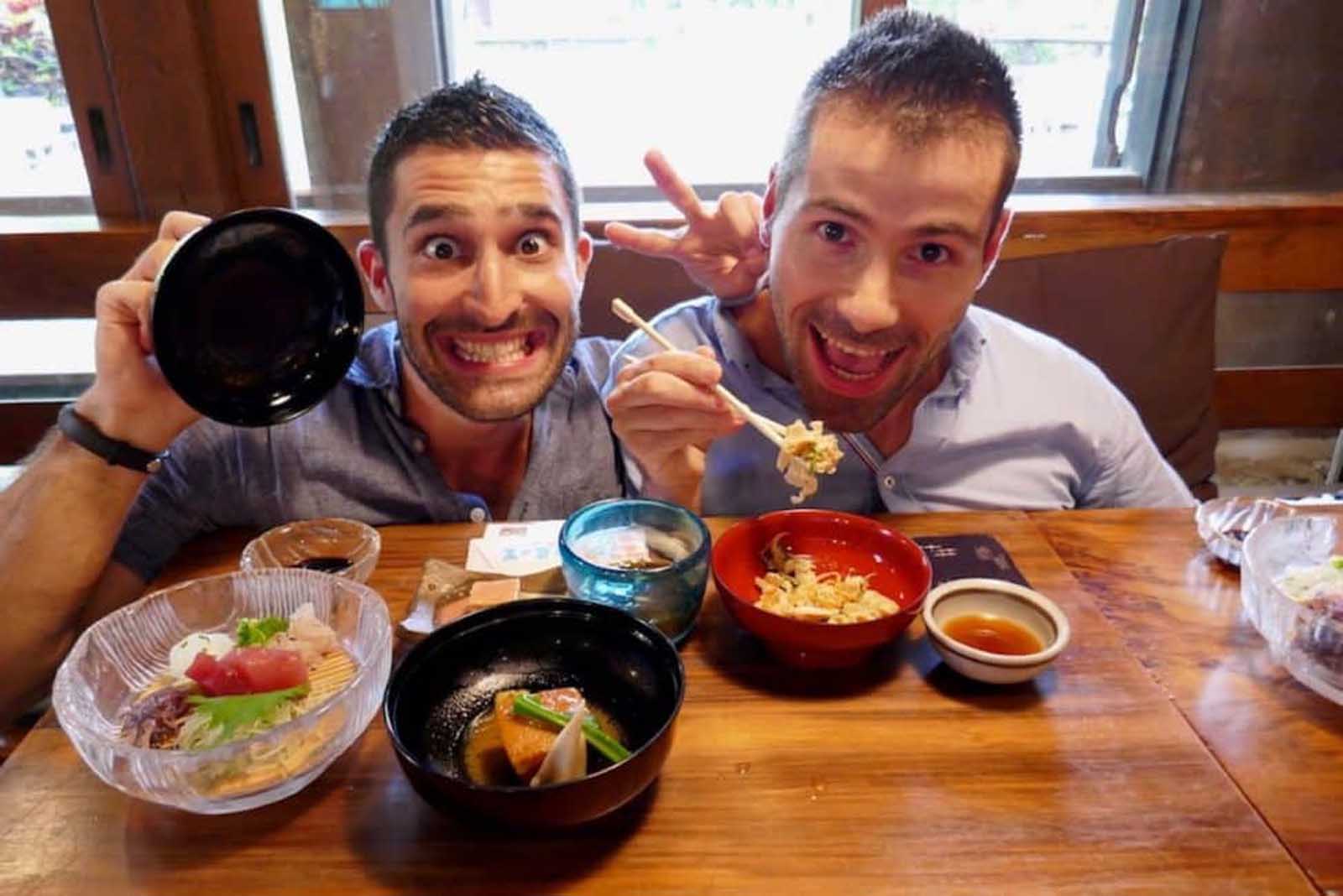
Fast forward several years to our second visit to Japan when we finally decided to fulfill Sebastien’s dreams and dress up as a pretty male geisha in Tokyo.
“Half our customers are in fact Japanese men, mainly straight men, who just want to transform into something completely different”. Says Michiru, the owner of the Studio Geisha Cafe.
Michiru, a former model/actress, set up the Studio Geisha Cafe with her husband. Their goal, is to provide people the chance to live out their dreams. She’s used to dealing with Japanese men who want to be transformed but we were going to be her first foreign male geisha.
The cafe (actually two apartments) is in the Tokyo suburb of Morishita and people come here to experience what it’s like to be a geisha (or a samurai) and get a feel for traditional Japan.
Who Dresses Up as a Geisha?

Most dress up for a photo souvenir, while others are honeymooners who want to dress up in traditional Japanese wedding outfits.
The cafe does not offer a rental service; the outfits stay in the building, and Michiru explained that she is keen not to promote male geisha transformation as some sort a joke.
She had one Japanese man who wanted to dress up like a geisha, with a moustache, as part of a “funny” TV broadcast. The offer was declined.
Our Geisha Transformation

The experience is an education on a geisha’s daily life. Tradition seeps into every facet of the makeover, whether it’s the way wigs are styled or the vivid whiteness of the makeup.
Michiru was on hand to answer our questions about culture: such as why the geisha pose with a pout or serious expression (to avoid baring their teeth) or flash a little red from the undergarment (a coy way to titillate).
There’s so much detail involved at every stage of dressing up as a geisha that you only begin to appreciate it once you transform into one.
Watch our time-lapse video of Stefan’s male geisha makeover in Tokyo:
The process, which took around three hours, including the photoshoot, began with us undressing down to our trousers and putting on the white hada-juban undergarment and the geisha tabi socks.
The tabi socks divide your toes into two: one space for the big toe and the other for the remaining toes.

This optimizes the feet for walking in the high wooden okobo shoes, worn outside to prevent the kimonos from touching the ground. Visiting Japan? Read the Top 10 Things to do in Kyoto, Japan where the Geisha culture is still very strong.
The white Shironuri make up

Geisha are instantly recognizable by their elaborate white shironuri makeup. This is a thick paste, traditionally applied to showcase a young, beautiful face in the dark candlelit rooms before electricity was invented. Learn how to travel to Tokyo on a budget.

For us, we had to have several extra layers to hide our beard shadows.As part of the makeup process, the eyebrows had to be hidden using a special wax and new ones painted over. This was the most surprising part of the experience.
When you “take away” your eyebrows you suddenly transform your face. We watched our faces transform from the masculine features we’re so used to seeing into a new, more feminine impression.
Fitting the geisha wigs

After makeup was applied, the wigs had to be fitted.
The geisha wigs are based on the shimada hairstyle developed during the Edo period (1603-1868) as a popular fashion among merchants’ wives. More specifically, this is where the hair is gathered together at the crown of the head and a portion of the bun is sectioned off to point outwards.
Michiru’s husband is a wig specialist and he spent a good half hour applying our wigs, choosing the best one to suit our head size, eyeing each fitting carefully until he was satisfied.
Kimonos, lights, action!

Once our pretty kimonos were fitted, we perfected our pouts and were ready for the full-length mirror.
The makeup is so intense that the reflection staring back in the mirror was almost unrecognisable.
As the photoshoot progressed, Michiru, who was apprehensive towards us at first, started to open up.
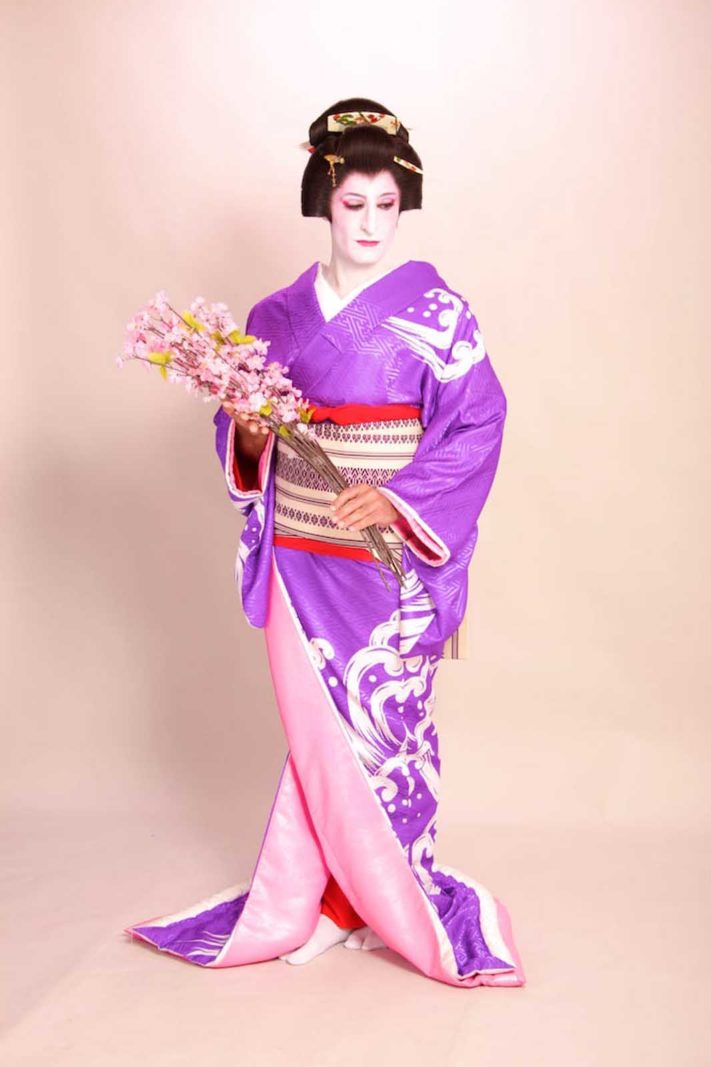
We’ll never forget her enthusiasm as she rushed to adjust where the kimono was placed between each shot, and then her crying out, “Gorgeous! Gorgeous!”
This was truly an experience we’ll certainly never forget as well as being a fascinating insight into this elusive cultural facet of Japan.
More About Taikomochi
The “taikomochi,” often referred to as the “male geisha” of Japan, represents an intriguing yet less explored facet of Japanese entertainment. The term “taikomochi” translates to “drum carrier,” harking back to their historical roles as men who played music at festivals during the Edo period. Before the ascendancy of the female geisha, these male entertainers held significant sway in the entertainment domain.
Like their female counterparts, taikomochi would entertain guests at gatherings with song, dance, and particularly, engaging conversations. Their primary role was to enliven the atmosphere, regaling audiences with wit, humor, and tales. However, with the increasing prominence of female geishas, the demand for taikomochi saw a marked decline.
The contemporary era witnesses only a handful of these entertainers, mainly in Tokyo, making them a rare glimpse into traditional Japanese culture. While both geishas and taikomochi aim to entertain, they have distinct methods. Geishas often delve deep into traditional arts, showcasing dance, music, and singing, while taikomochi bring lighter, often comedic storytelling to the fore.
If you too want to transform into a geisha, we highly recommend Michiru and her team at The Geisha Studio Cafe. To read more about our experiences in the big capital city, check out our gay guide to Tokyo.
Read next by Nomadic Boys: 4 Reasons Gay Couples Should Travel to Asia
- Read more about Tokyo and Japan

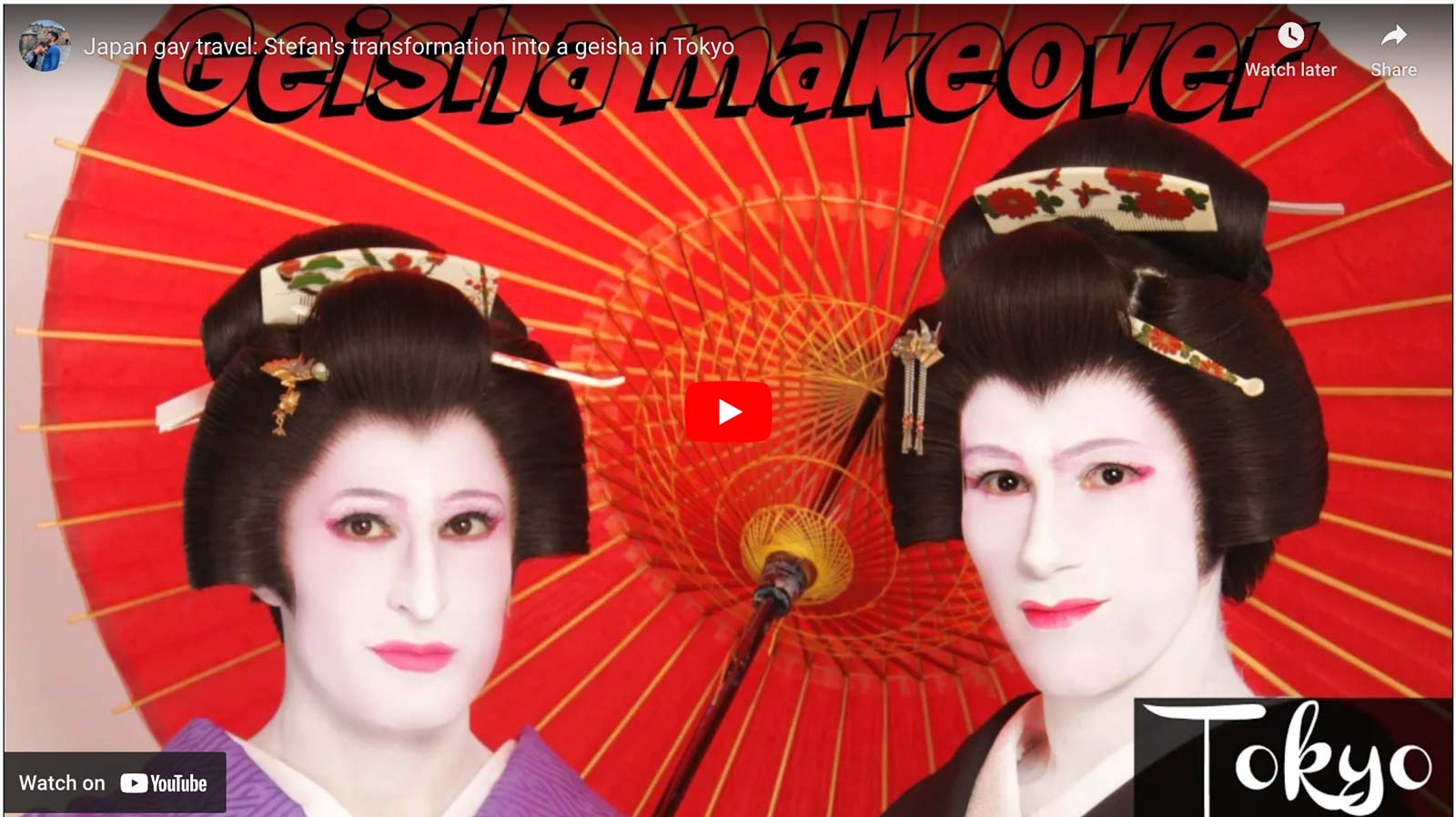
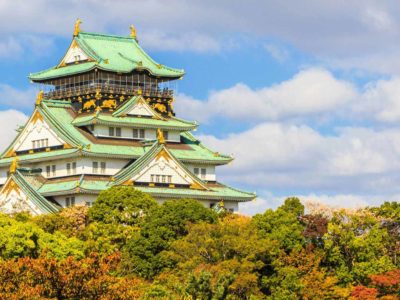
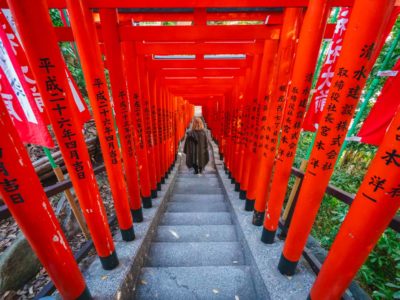
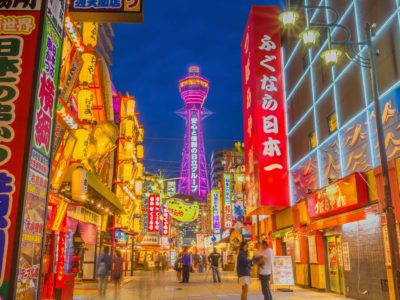
Excellent I loved it so much, thanks for sharing, I’m following your blog and waiting for new post
Great article
Muito Interessante….Parabens
Very exotic culture rs